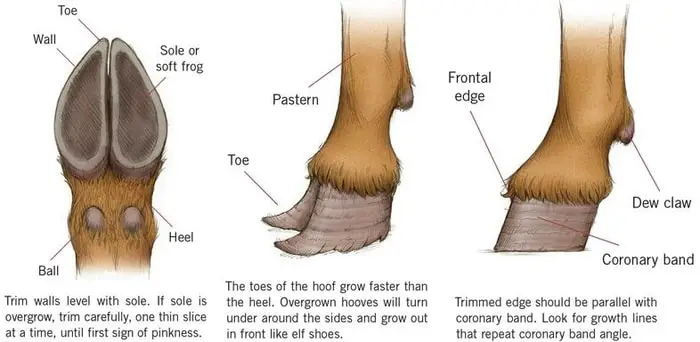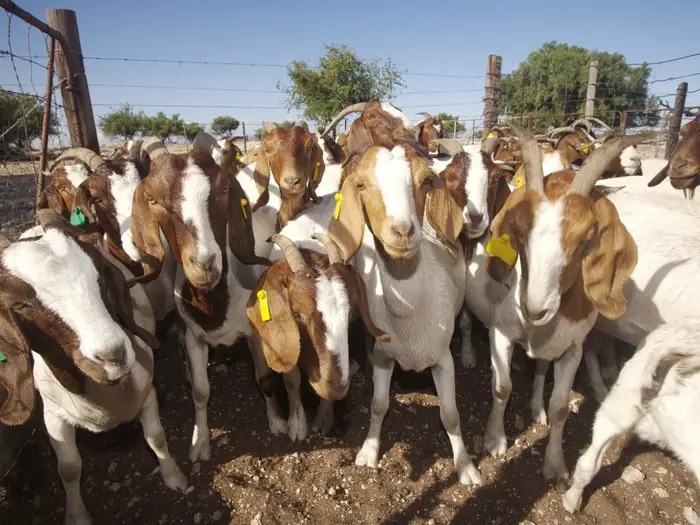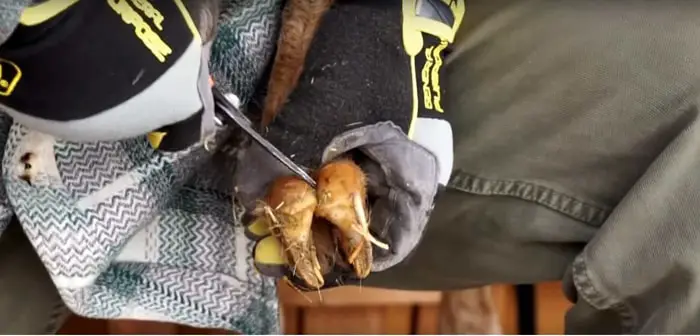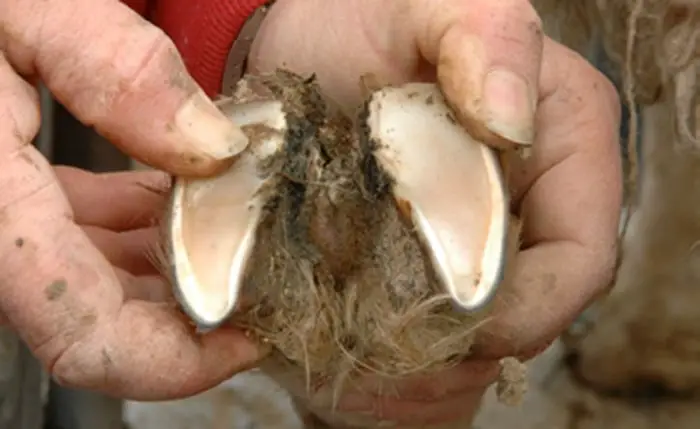Hoof rot in goats or contagious footrot is a common bacterial disease of sheep and goats. Footrot in goats is caused by two bacteria, Fusobacterium necrophorum and Dichelobacter nodosus. The bacteria are generally present in the moist soil of sheep and goat’s houses and are very difficult to eradicate. The infection causes severe economic loss of small ruminant farms.
What is Hoof Rot in Goats?
Hoof rot is an infectious disease of interdigital space of hoof of sheep and goats. The disease is primarily caused by a lacerated or punctured wound in the interdigital space. Later, the wound is contaminated by the secondary bacterial spores that generally reside in the soil of the goat’s house. The disease is seen by pain in the legs, lameness, loss of appetite, and progressive weakness.

Causes Footrot in Goats
The disease is primarily caused by any wound in the goat’s leg’s interdigital space. The goat’s foot is bifurcated like cattle and sheep. The area is vulnerable to any complex objects like stone or wooden particles. The causative organisms for footrot in goats are:
- Fusobacterium necrophorum.
- Dichelobacter nodosus.
The bacteria are generally present in the moist soil of the environment. The organisms enter through the cut wound of the interdigital space and go to the systemic circulation.

Predisposing Factors of Footrot in Goats
The predisposing factors of hoof rot in goats are:
- Rainy season.
- Moist soil in goat’s house.
- Overgrowth of the hoof.
- Damages hoof.
- Deficiency of certain minerals.
- Cracked hoof.
Clinical Signs of Hoof Rot in Goats
The disease is the aggressive progress of foot scald in sheep and goats. The disease is usually in one foot of the affected goats. The usual clinical signs are as follows:
- Redness and swelling of interdigital space of goats.
- Necrosis and formation of yellowish pus in the foot.
- Painful gait and lameness.
- The affected animals graze on their knees.
- Foul-smelling from the interdigital space.
- In severe cases, there is detachment of hoof from the legs.
- Abnormal hoof growth.
- Presence of fever.
- Loss of appetite.
- Loss of production.
- Secondary infestation with maggots may occur.

Diagnosis of Footrot in Goats
The disease can be diagnosed in the following ways:
- History of exposure to risk factors.
- Specific clinical signs.
- Isolation and identification of causative bacteria.
Treatment of Hoof Rot in Goats
The treatment strategies for footrot in goats are as follows:
- Cleaning the affected foot with a 2% Tincture of Iodine.
- Injection of Broad-spectrum antibiotics.
- NSAIDs can be given to reduce pain and lameness.
- Antihistamines can be given to reduce irritations.
- Hoof trimming should be done regularly, and washing the foot should be with 10% Copper sulfate or Zinc sulfate.

Prevention and Control Footrot in Goats
Prevention is the primary tool for reducing the disease in your herd. The measured you must follow to prevent the disease are:
- Never purchase any lame goats for your farm. The animals must be inspected thoroughly before purchase.
- Keep the animal quarantine at least four weeks after purchase.
- Never buy any animals from infected herds.
- Improved the drainage of the goat house.
- Keep clean the house and pasture of goats.
- Isolation of infected goats from the healthy herd.
- Provide a balanced diet with adequate minerals and vitamins.
- Maintain a regular health check-up at your farm.
Concluding Remarks on Hoof Rot in Goats
Hoof rot is a common managemental problem in goat farms. The disease is primarily caused by the damaged hoof and is later invaded by the secondary bacteria. The disease is seen by lameness, pain in the legs, necrosis of interdigital space, and production loss. The disease is easily prevented on farms by taking adequate preventive measures.